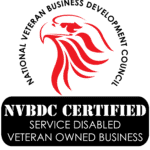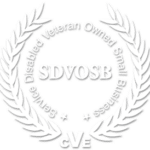When it comes to securing government or large commercial contracts, having a strong solution isn’t enough. Your idea might be the most innovative, efficient, or cost-effective option on the table—but if it’s not clearly explained in a compliant, persuasive proposal, it won’t make the shortlist.
Technical proposals are more than a formality. They are the proof that you understand the project, the client, and how to deliver real results. They serve as your first impression, your strategy blueprint, and your chance to show evaluators that you’re not just qualified—you’re the best choice.
The Critical Role of the Technical Proposal
A technical proposal answers a fundamental question for evaluators: Can this team really do the job, and do they understand what’s at stake? While pricing and past performance matter, the technical proposal is where you get to prove your capabilities, processes, and value in detail.
In government contracting—especially under the Federal Acquisition Regulation (FAR)—technical volumes often weigh heavily in the scoring criteria. And they don’t just reward innovation. They reward clarity, compliance, and alignment. You could propose the most efficient system or groundbreaking tool, but if your narrative is disjointed, confusing, or non-compliant, the evaluators may never see its merit.
Why the Right Framework Changes Everything
Creating a high-quality technical proposal doesn’t mean reinventing the wheel for every submission. Nor does it mean defaulting to cookie-cutter content. The key lies in adopting a flexible, modular framework that allows your team to write with precision, consistency, and speed—without sacrificing customization.
Think of it like a set of Lego blocks. You build the foundation once, then rearrange and tailor the pieces depending on the shape of each project. These modules aren’t generic—they’re strategic assets, refined over time, regularly updated, and backed by subject matter expertise.
What to Include in a Winning Technical Proposal
Let’s break down the essential components that make up an effective, evaluator-friendly technical proposal:
- Strategic Introduction or Executive Summary
First impressions matter. Begin by aligning your capabilities with the client’s mission and goals. Address their pain points, clarify why your team is uniquely qualified, and preview the value you bring. Avoid vague, high-level fluff—speak directly to the agency’s vision and challenges. - Technical Approach
This is the heart of your proposal. Describe exactly how you’ll meet (and exceed) the scope of work. Explain the tools, techniques, and workflows your team will use. Back it up with data or visuals where helpful, and clearly show how your approach reduces risk and enhances outcomes. - Management Plan
How will the work be delivered? Lay out your leadership structure, communication protocols, tracking tools, and risk mitigation strategies. Make it crystal clear who is accountable for what—and how that accountability is managed across teams and stakeholders. - Staffing and Key Personnel
Showcase the team. Include named individuals with relevant experience, detail their roles, and connect their qualifications to specific contract requirements. Demonstrate readiness and availability, not just theoretical expertise. - Past Performance and Relevant Experience
Prove that you’ve done this before—successfully. Highlight similar projects, client satisfaction, and measurable outcomes. Pull in CPARS data or performance metrics where possible. Let your experience speak directly to the challenges and scale of this new opportunity. - Quality Control Measures
Quality is non-negotiable. Describe how you’ll maintain high standards across the project lifecycle. Define inspection points, documentation procedures, and who’s in charge of ensuring deliverables meet client expectations. - Safety Protocols
Especially for construction or field-based contracts, safety isn’t just important—it’s scrutinized. Include safety records, certifications, training plans, and how your team mitigates site risks. - Project Schedule
Don’t just show a timeline—explain your sequencing logic. Demonstrate how you’ve accounted for long-lead items, inspections, and dependencies. Show that your team has both the foresight and the tools to hit milestones reliably. - Innovation and Value-Adds
Where can you go above and beyond? Offer enhancements, proprietary tools, or bonus services that are relevant—not just flashy. Always tie them back to the client’s goals and back them up with evidence of success.
Making the Process Work for You
To scale this process across proposals, develop a living content library that maps to each of the above sections. Revisit and revise your modules quarterly. Involve subject matter experts early and often. Most importantly, train your team on how to adapt—not just reuse—these assets.
Use a compliance checklist tailored to different client types (e.g., federal vs. state vs. commercial) to ensure you’re not just hitting the marks, but doing so with intention.
Proposals Don’t Need to Be Reinvented—They Need to Be Refined
By embracing a modular, framework-driven approach to technical proposals, you empower your team to write with more clarity, speed, and strategic focus. You reduce rework, improve quality, and give yourself more time to focus on what really matters—crafting a story that wins.
Want to get started? Look at your last five proposals. Identify where you duplicated effort or reused outdated content. That’s where a smarter system starts. Check out our latest webinar for more information on writing proposals.



